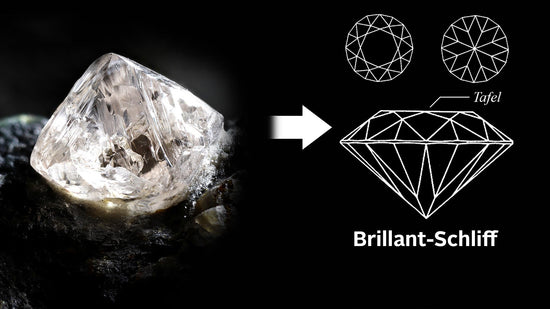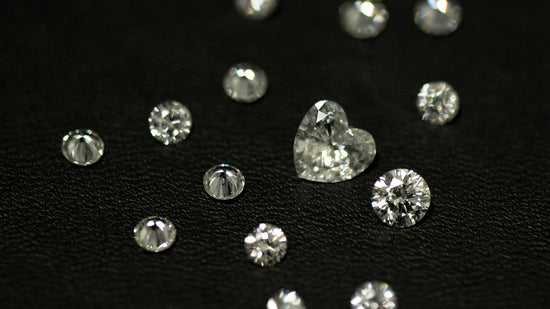

The 4Cs are the criteria for determining the quality and value of a diamond.
The 4Cs:
-
Carat (weight)
-
cut
-
Clarity
-
Colour
One should be aware of this fact: the better the quality of a diamond, the more magnificent its fire, the more magical its charm and radiance.
Two diamonds of the same size may initially look the same when viewed superficially. However, the values of these two diamonds may be completely different. The differences are actually not very large, but their effect is unmistakable.
The 4Cs of diamonds - Carat, Color, Clarity and Cut - will help you identify these differences and understand their meaning.
The Meaning of the 4Cs
Carat:
The weight measurement of a diamond is in carats (ct). One carat is equal to 0.2 grams and is divided into 100 points. This means that a diamond weighing 50 points is equal to half a carat or 0.50 carats. The carat measurement is an important metric that indicates the physical weight of the diamond and is often considered in conjunction with other factors such as cut, color and clarity to determine the overall value and attractiveness of the diamond.
Colour: The colour of a diamond is a crucial factor in its beauty. A completely colourless diamond allows white light to pass through it effortlessly, creating an impressive play of colour. Diamonds are graded on a scale from D (completely colourless) to Z (clearly tinted). DF grade diamonds are considered particularly valuable because they are colourless and reflect the purest white light. GJ grade diamonds are almost colourless and offer excellent value for money. Diamonds graded K and above may have visible colour tones and are generally less valuable.

Clarity: The clarity of a diamond refers to the presence of natural inclusions or features. Fewer and smaller inclusions usually mean more brilliance because light can penetrate the diamond better. Low clarity diamonds, which have almost no visible inclusions, are particularly sought after but also more expensive. Clarity affects both the beauty and price of a diamond and should be considered along with other factors such as cut, color and carat weight to make the right choice.

Cut: The cut of a diamond is undoubtedly one of the most crucial characteristics that affect its beauty and brilliance. This process includes not only the shape of the diamond but also its proportions, symmetries, arrangements and angles. All of these factors play a crucial role in how light enters, reflects and is refracted into the diamond, ultimately creating its unique sparkle. A carefully executed cut gives the diamond remarkable brilliance and radiant splendor.
The quality of the cut can be roughly classified into four levels between "Medium" and "Excellent". Diamonds that are optimally cut in terms of proportions, symmetry and angles are rated "Excellent" and are usually the most expensive and sought after on the market. These diamonds create a stunning play of light and colors that draws admiring glances.
Diamonds with a "Good" cut also have high brilliance, but they may have some deviations in proportions and symmetry. In the "Acceptable" category are diamonds with visible deviations that may slightly affect brilliance. Finally, there is the "Medium" category, where diamonds with suboptimal cuts are placed, which are usually less shiny and reflect less light.
It is important to note that the cut of a diamond significantly affects not only its beauty but also its value. Therefore, it is crucial to pay attention to the quality of the cut when purchasing a diamond to ensure that you are purchasing a top quality piece of jewelry that will give you years of enjoyment. A diamond with a top quality cut will undoubtedly make your special occasion or piece of jewelry a memorable one.






